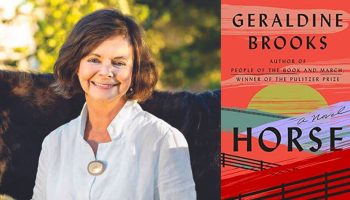From his rural beginning in Alabama, to a march at the side of Martin Luther King Jr. in Washington, D.C., John Lewis fought his way through hate and violence to his position as a congressman.
Today, the fight for civil rights is just as relevant, and Lewis’ graphic novels, the March series, about his experiences in the 1960s, are a powerful tool for young readers.
“I think the events last week and DeRay [Mckesson]’s arrest, along with 100 others in Baton Rouge, is a stark reminder of the timeliness and importance of the work Lewis has done over decades,” said Matt Ewalt, associate director of education and youth services. “What he has shared for young readers with the March series is a way to engage everyone in this critical conversation.”
Ewalt said Monday’s programming in the Amphitheater -— featuring civil rights activists of different generations — is a reminder of how important it is for an entire community to be involved in the conversation, especially young people.
March chronicles the struggles Lewis faced in his early life and career because of his race.
At 4:30 p.m. Thursday in the Smith Memorial Library, CLSC Veranda employee Mary Pat McFarland will lead the CLSC Young Readers program in a poetry activity. She will use the Dream Flags Project as a foundation for expression.
“We wanted to put together a program that would honor Lewis’ work,” Ewalt said, adding that the DFP is inspired by the poetry of Langston Hughes, particulary “The Dream Keeper,” and the Buddhist tradition of making prayer flags.
“It invites young readers to share their own dreams and hopes, in poetry,” Ewalt said.
Kids will reflect Hughes’ poetry and its relevance to Lewis’ work and current events. They will also have the opportunity to create their own poetry and prayer flags based on their thoughts, dreams and discussions at the event.
“I am fascinated by John Lewis’ March series because I do worry. As much as younger people now are strongly committed to civil rights and to tolerance, and to a more inclusive society, the memory of that civil rights movement is enough in the past,” Ewalt said. “I worry there is a danger of it being forgotten.”
The format of March as a graphic novel is significant in terms of which audience the author wanted to reach.
“This was a decision on his part, to talk directly to young people,” Ewalt said. “To give them a context, in order to understand where we are now, you have to understand where we came from.”
Ewalt said the fact that the series is in a graphic novel format makes it appeal to young readers that otherwise, may not be interested in reading it.
“We need to have a program for Young Readers on race, Justice and their role in confronting these issues, this week,” Ewalt said.





